Acropolis and Parthenon
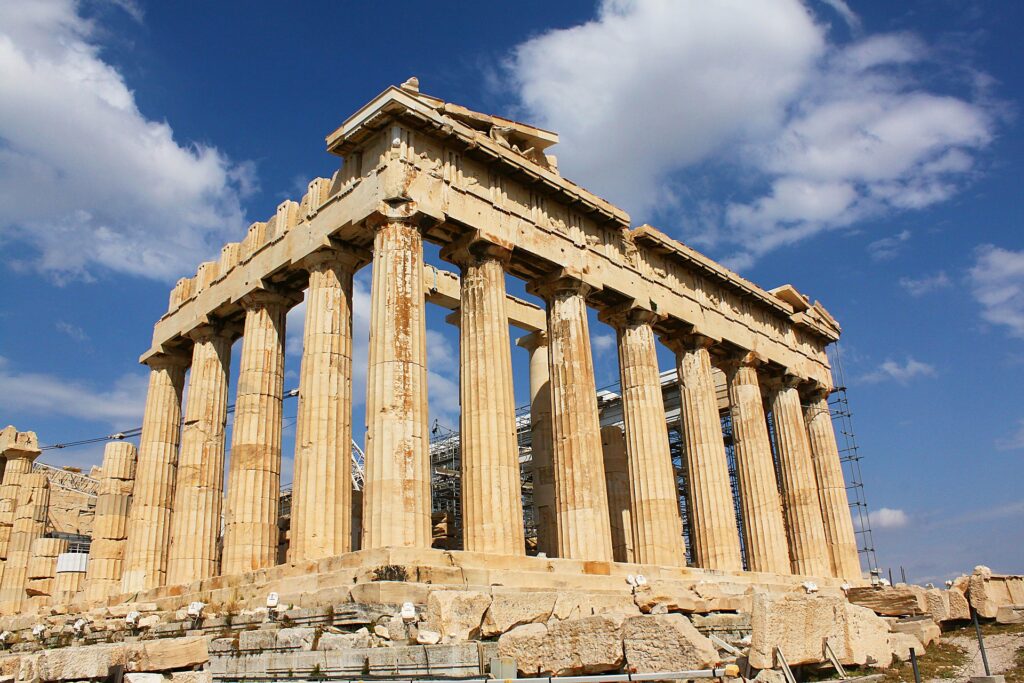
Parthenon is an ancient Greek temple dedicated to Goddess Athena. It is one of the most important antiquities of the world.
Acropolis is an architectural complex of monuments including Parthenon, Erechtheion, Propylaia and the temple of Athena Nike. Democracy, Philosophy and Theater were born on Acropolis hill.
“Acropolis” derives from the combination of the greek words “acro’’ meaning the edge and “polis” meaning the city.
Acropolis is situated on a steep hill in the heart of Athens and during the war, it was used as a fortress.
You may click here to view our creative activities connected to Acropolis and Parthenon.
Dionysus Ancient Theater
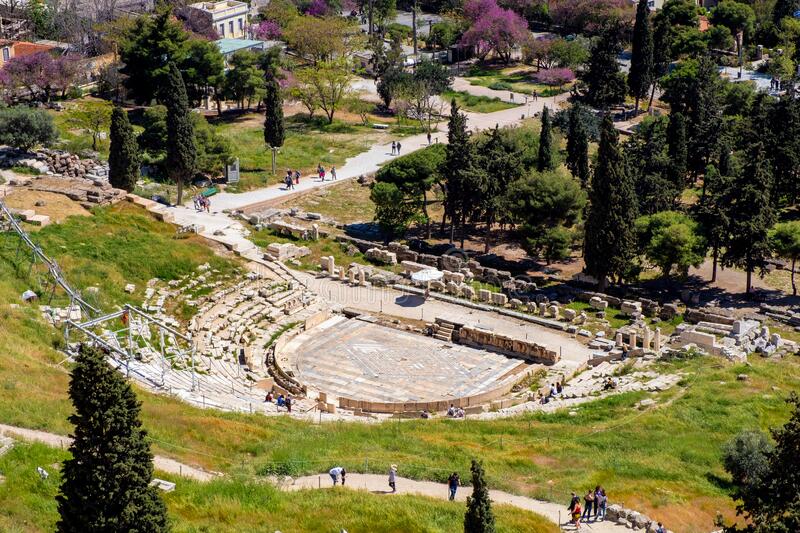
Dionysus is an ancient Greek God. He was the God of Joy, Festivals, Wine and Drama.
It’ s the oldest theater of the world. It was mainly used as a place for ancient drama performances (tragedy, comedy…).
Dionysus Theater is located on the south side of the Acropolis. The tourist can easily visit it.
You may click here to view our creative activities connected to the Theater.
Pnyka
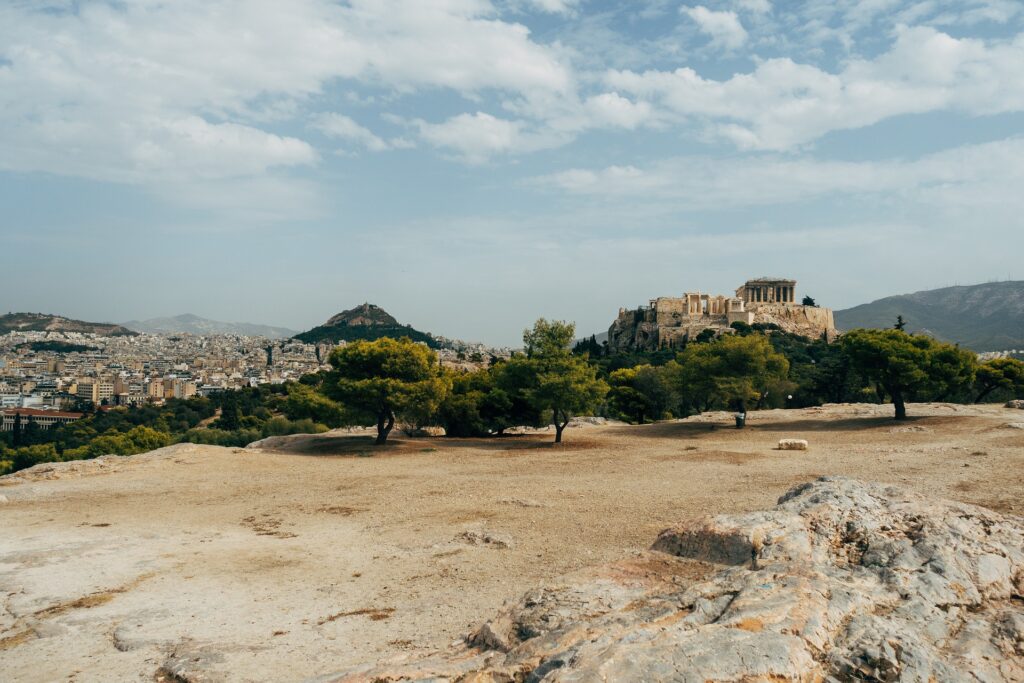
Pnyka is the name of an area on the west of Acropolis of Athens. In this area the assembly of ancient Athenians took place.
Pnyka is dedicated to the Father of Gods, Zeus!
Pnyka is a hill, a flat hill on the west side of Acropolis.
You may be interested in exploring our Pnyka Workshop!
Plaka
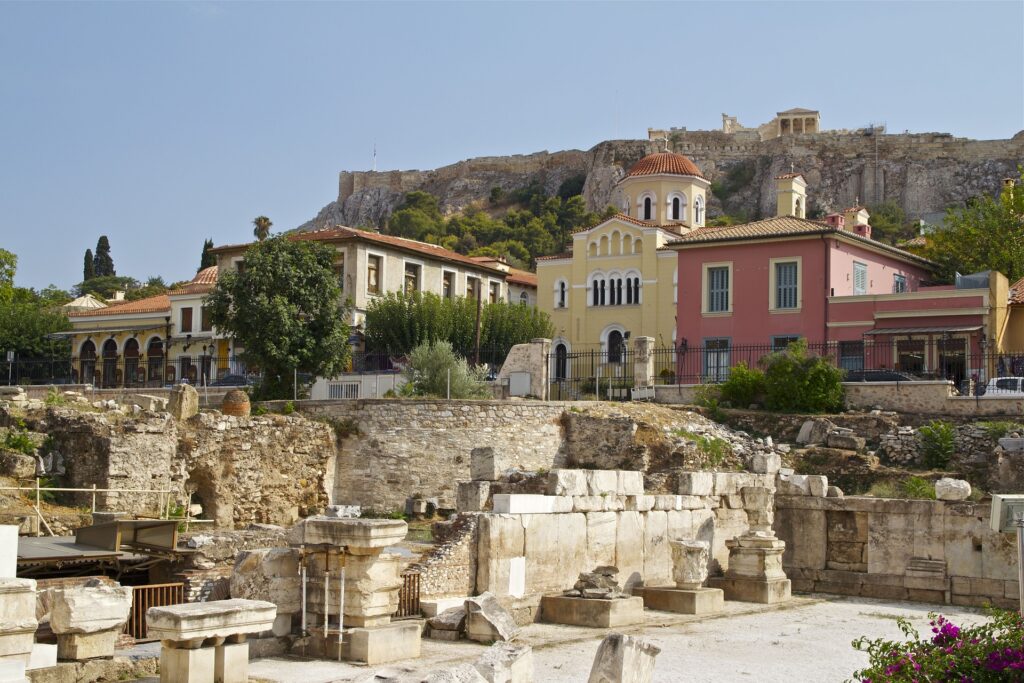
Plaka is a neighbourhood in the heart of Athens. It was firstly inhabited during antiquity and it was the centre of Ancient Athens.
In this area, you can find museums, traditional taverns and restaurants, artistic cafés and souvenir shops as well as old houses belonging to famous citizens of Ancient Athens.
If you walk towards Acropolis, you will also explore Anafiotika district, an artistic path in Plaka.
You can use one of the numerous means of transport connecting the centre of the city with the other regions of Athens; Acropolis metro station, Syntagma or Monastiraki metro station and many buses will help you to move around easily.
You may click here to view our creative activities connected to Plaka.
Syntagma metro station
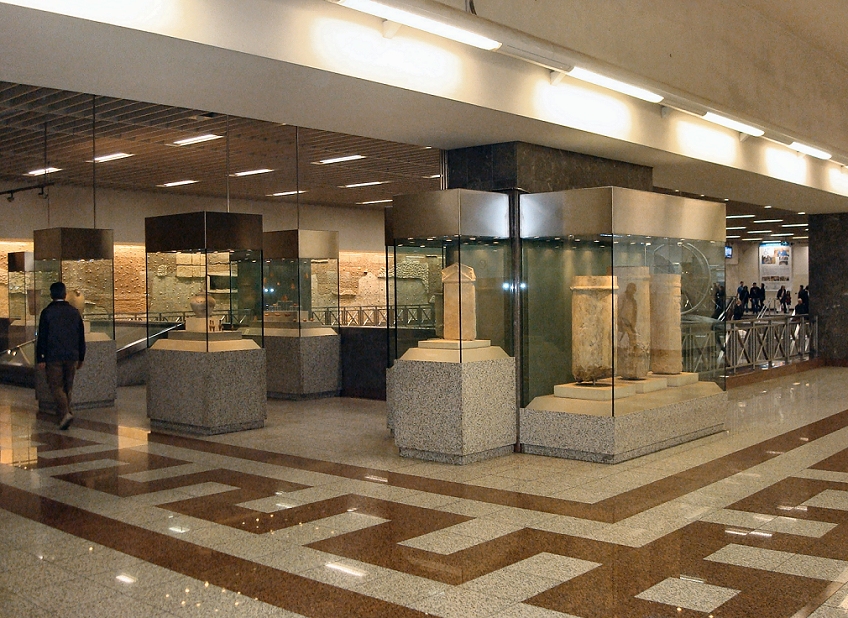
Syntagma metro station is an underground station of the Athenian metro including lines 2 and 3.
At this station, there is a lost property office, a helpdesk and an office for complaints. Also, at Syntagma station you will have the chance to visit the exhibition area for free and admire a large variety of archaeological items found during the construction of the station.
It is located on Syntagma square, under Vasilissis Amalias street. It is a four floor station and it constitutes the centre of the metro network in Athens. It connects the centre of the city with the airport in 40 minutes.
You may click here to view our creative activities connected to Syntagma metro station.
Acropolis metro station
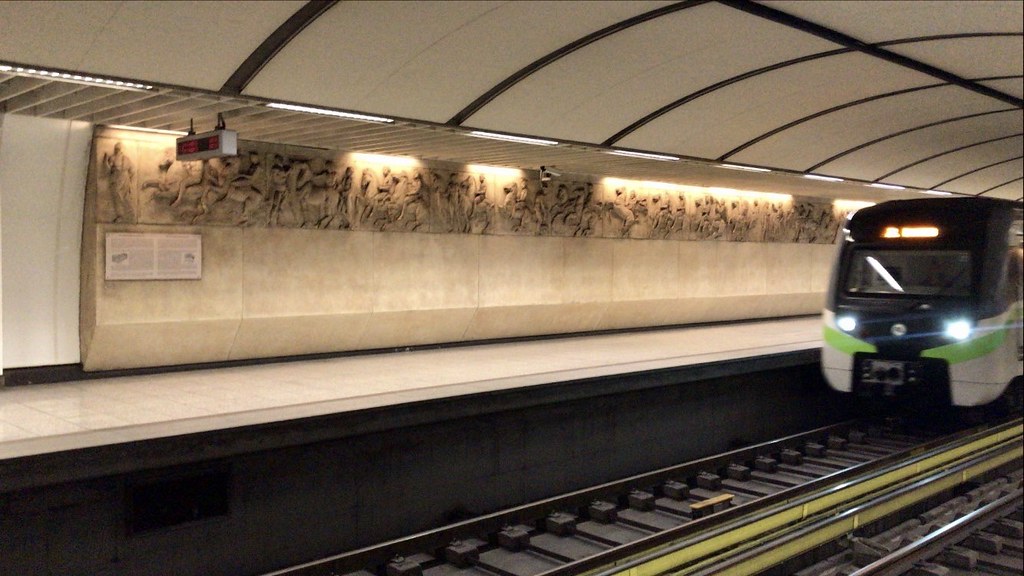
Acropolis metro station is an underground station of line 3 and it is connected with Syntagma station.
At this station, there is an exhibition of archaeological findings as well as some copies of artwork representing Acropolis. Also, you will have the chance to admire a painting of politician Melina Merkouri standing in front of Parthenon, symbol of its significance for Athens.
It is located in Plaka district.
You may click here to view our creative activities connected to Acropolis metro station.
Eleftherias Park
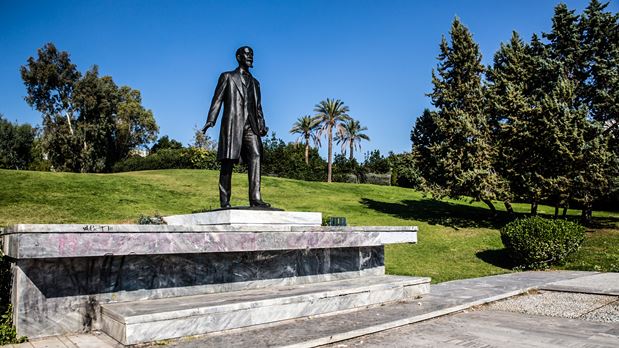
Eleftherias Park rises above an architecturally diverse area of Athens that features grand embassies, neoclassical residences and modern buildings.
Interesting features of the park are the statue of prominent Greek politician Eleftherios Venizelos, as well as the grass mounds that point out the quiet beauty of the scenery in the park and the surrounding area, looking up to Lycabettus Hill.
At this park, you can visit the Athens Municipality Arts Centre, which hosts various art exhibitions and you can attend music and theatre performances that are held every year in the beautiful open space in front of the building. You will also have the chance to visit the “Eleftherios Venizelos” Museum, featuring documents, portraits and personal items from the era in which the significant Greek statesman lived.
The park is an oasis in the heart of Athens offering recreation and relaxation. It is a meeting point and ideal destination for a beneficial break, a summer afternoon walk or a cultural outing.
In the back of Eleftherias Park, there were military quarters and later during the Greek dictatorship they were detention centers. The park, which was named “Eleftherias” (Freedom) Park precisely because many fighters for democracy were tortured and suffered, is now a place of remembrance and culture.
Eleftherias Park rises above the Vasilissis Sofias avenue.
You may click here to view our creative activities connected to Eleftherias Park.
Monastiraki
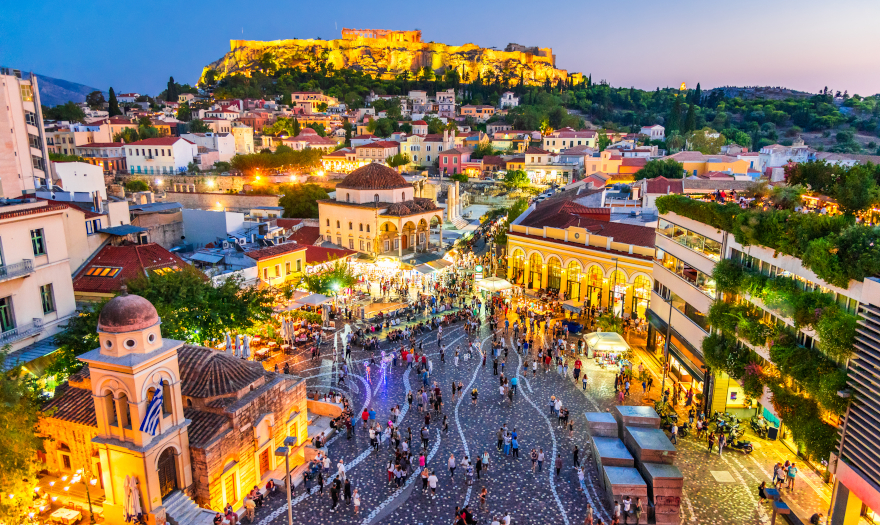
Ancient, Ottoman and Christian monuments mix with modern structures to create a colourful space in Monastiraki.
It used to be the hub of activity in the Byzantine and Ottoman times and it shows. Its maze of narrow, intersecting roads engulfs the city’s flea market, creating a modern day bazaar. Monastiraki square is a true testament to Athens’ many ambiences.
Monastiraki is located in the heart of Athens connecting the Plaka district to the Thissio area.
You may click here to view our creative activities connected to Monastiraki.
Thissio
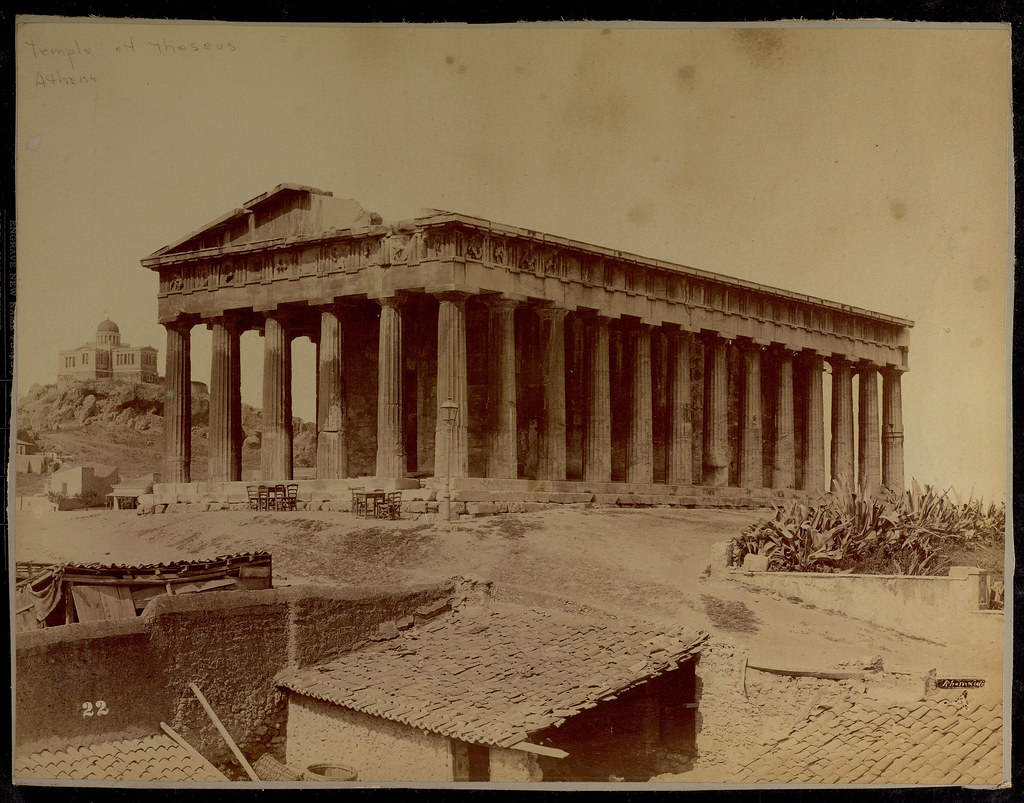
Thissio is a quarter owing its name to a case of mistaken ancient identity; Click next card to find out!
From when the nearby Temple of Hephaestus was mistakenly known as Thision in reference to Theseus, the mythical king of Athens. There are plenty of neoclassical houses, stately buildings and small building blocks reminiscent of what Athens looked like in the pre-war years. While exploring Thissio, you can have a coffee or lunch break at one of the charming cafés, bars and restaurants, enjoying amazing Acropolis views.
At the south of the Acropolis.
You may click here to view our creative activities connected to Thissio.
Dionysiou Areopagitou street
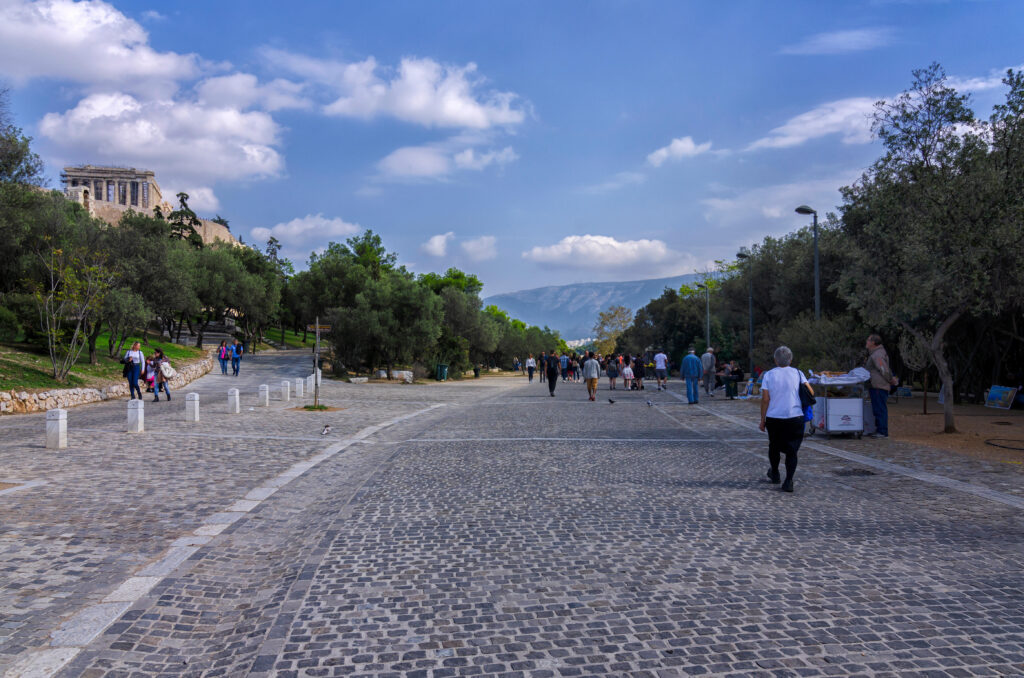
Dionysiou Areopagitou area consists of the paved street which runs alongside the Acropolis.
This is the place where you will explore monuments, including the Parthenon and the contemporary Acropolis Museum as well as many neoclassical buildings. You can walk with a climb on Filopappou Hill enjoying an unforgettable view of the city all the way to the sea, especially at sunset.
Close to Acropolis metro station.
You may click here to view our creative activities connected to Dionysiou Areopagitou.
Omonia Square
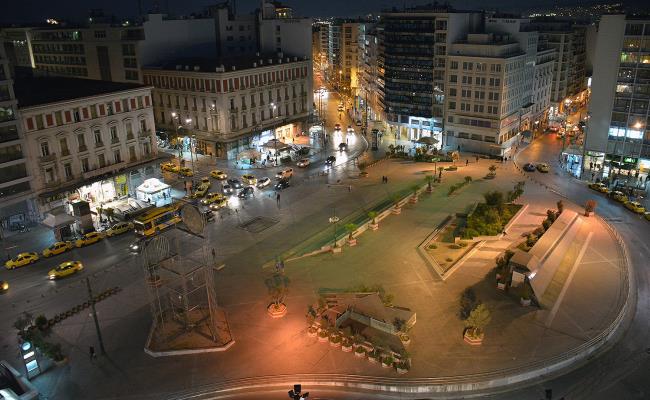
Omonia constitutes a crossroad connecting the major downtown streets.
It is surrounded by narrow commercial streets including the well-known Athinas street. It is a place full of shops and people. While visiting Omonia district, you can explore Varvakios Municipal Market,the city’s central food market, where you can find traditional treats and meet greek producers. Also, you can admire the newly renovated Omonia Square taking some charming shots.
Athens city center.
You may click here to view our creative activities connected to Omonia Square.
Panathenaic Stadium
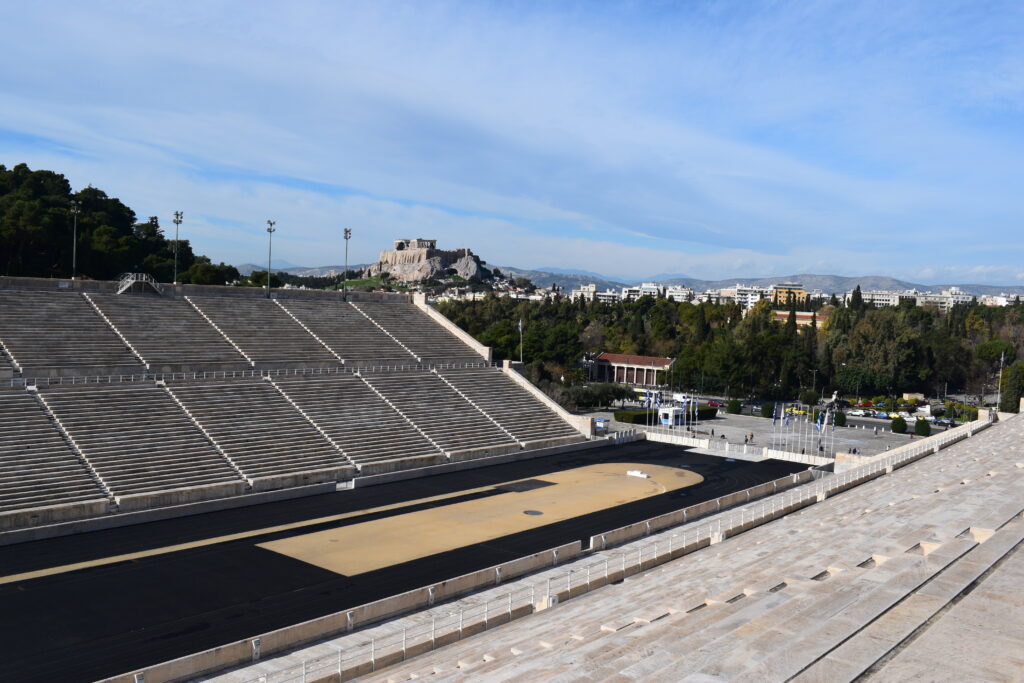
Panathenaic Stadium, also known as “The Kallimarmaron”, which means beautiful marble.
Kallimarmaron, which means beautiful marble, is the only stadium in the world made exclusively using white marble. The place was originally turned into a stadium in the 4th century B.C. After being completely restored, it hosted the first modern Olympic Games in 1896. During the 2004 Athens Olympic Games, the stadium hosted the archery competition and was the finishing line of the marathon. The arena’s size and dimensions conform to the ancient Greek model with a seating capacity of 45,000 people.
It is located between the neighborhoods of Mets and Pagrati.
You may click here to view our creative activities connected to Kallimarmaron.
Acropolis Museum
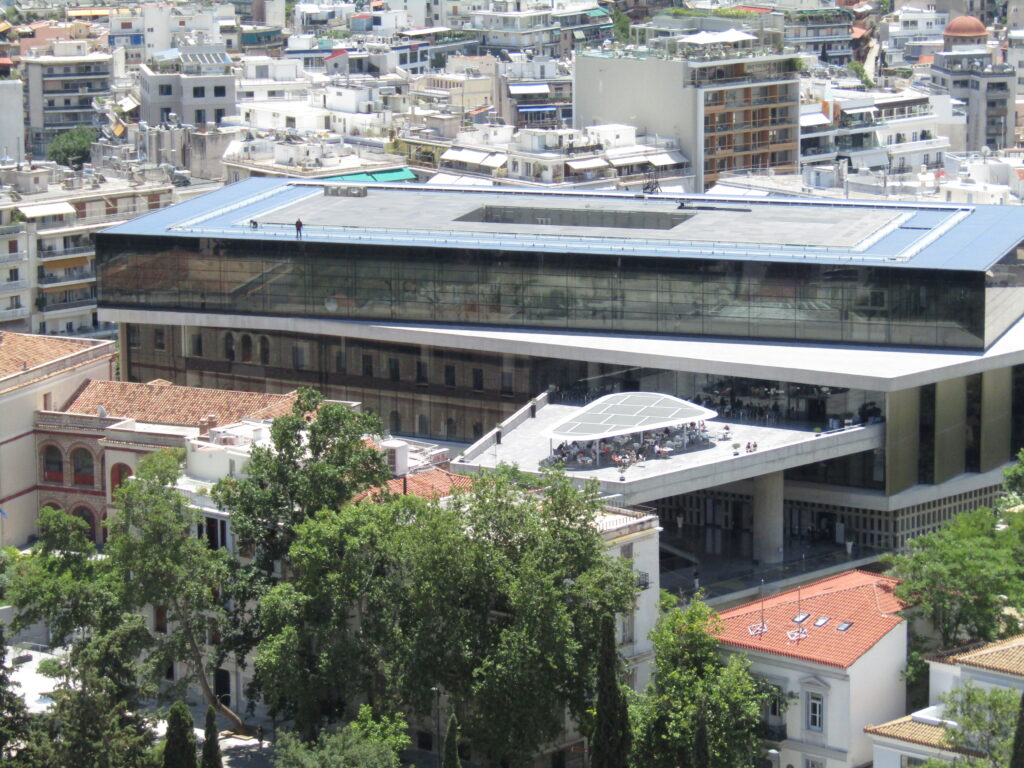
Acropolis Museum opened its doors to the public in 2009 and it constitutes a 14,000 square-metre glass and concrete landmark of Athens.
While visiting the museum, you will admire on display sculptures, including five of the original Caryatids from the Erechtheion Temple, ceramics, and other treasures from the excavations from the slopes, sanctuaries, archaic temples, and the Parthenon of the Acropolis. The top floor of the Museum offers a panoramic view of the Acropolis and modern Athens.
The Acropolis Museum is located in Dionysiou Areopagitou Street and it is easily accessible by metro.
You may click here to view our creative activities connected to Acropolis Museum.
The National Archaeological Museum
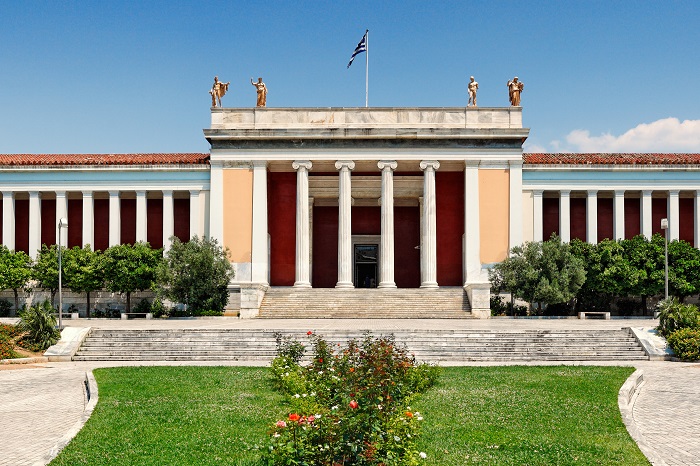
It is the largest museum in Greece and one of the most important in the world.
The museum contains 11,000 masterpieces dating from the 7th millennium B.C to 5th century B.C, including the following collections: Prehistoric (Neolithic, Cycladic and Mycenaean antiquities), Sculptures, Bronze, Egyptian Antiquities, The Stathatos Collection with miniature artifacts, Vases and Miniatures and Cypriot Art. In addition to its permanent collections, the Museum also hosts periodical exhibitions, organises educational programmes as well as workshops for the maintenance of metallic objects, ceramics, stone, organic materials, photographic workshop and chemical laboratory.
The National Archaeological Museum is located in an imposing neoclassical building in the centre of Athens, on Patission street.
You may click here to view our creative activities connected to National Archaeological Museum.
National Museum of Contemporary Art
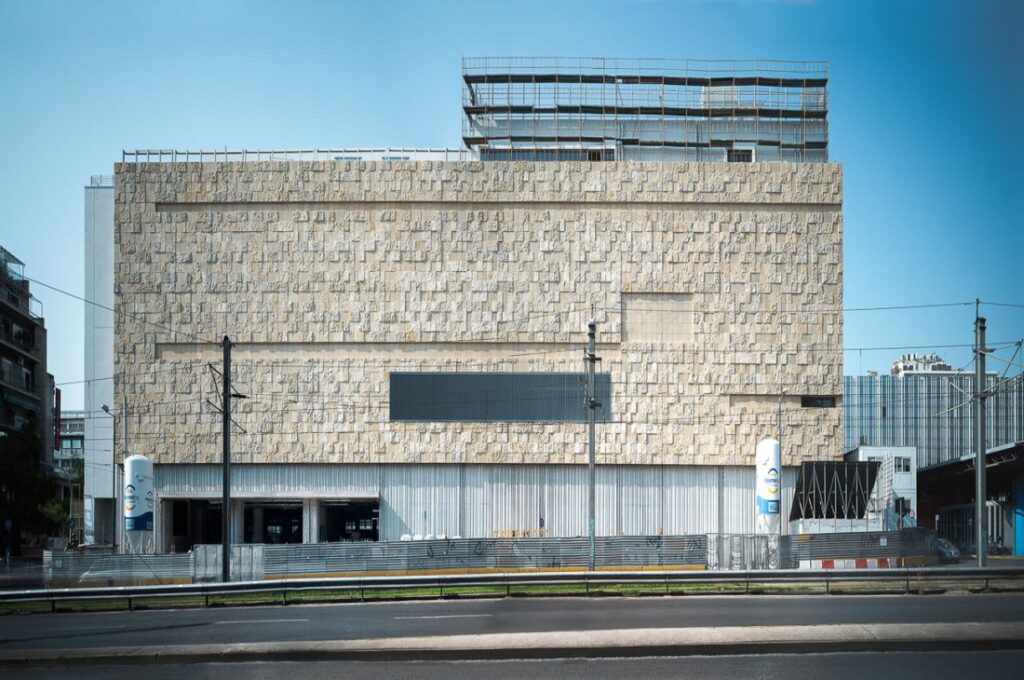
Museum’s collection includes the works of Greek and international artists based on different art mediums -painting, sculpture, video, installations, photography, engraving, industrial design.
The aim of the museum is the promotion of education in the arts and raising public awareness regarding contemporary culture. One of its founding goals is to promote innovative and experimental artistic movements and the production of audiovisual works via new media.
The National Museum of Contemporary Art is housed in an old reconstructed brewery in central Athens and opened its doors to the public in 2020, after many years of temporary exhibitions in different buildings and open spaces.
You may click here to view our creative activities connected to National Museum of Contemporary Art.
Philopappos Hill
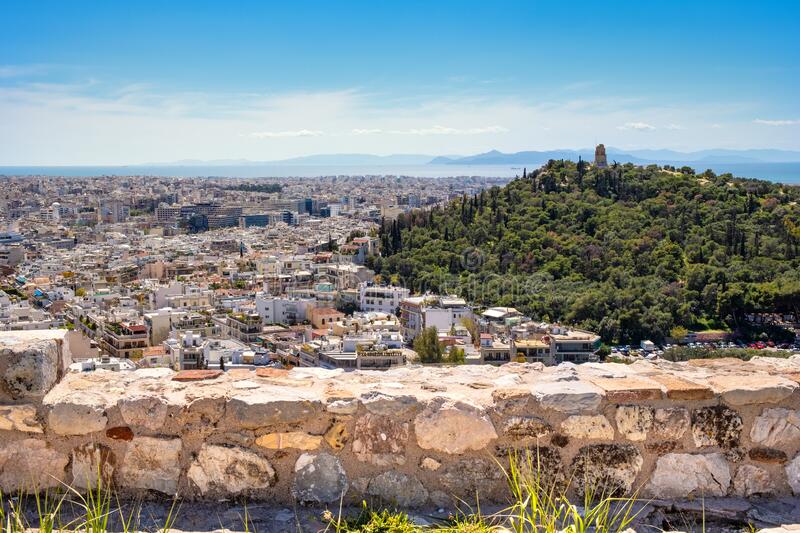
Philopappos Hill offers an outstanding view of Acropolis, as well as of Piraeus port.
Apart from the view and the impressive shots which you will have the chance to take, Philopappos Hill also played a strategic role in the city’s defense during the ancient wars. It is a great opportunity for a walk in the city centre as well as for exploring the monuments situated on the hill.
Philopappos Hill, also known as the Hill of the Muses, is located in the heart of Athens.
You may click here to view our creative activities connected to Philopappos Hill.
Ancient Agora
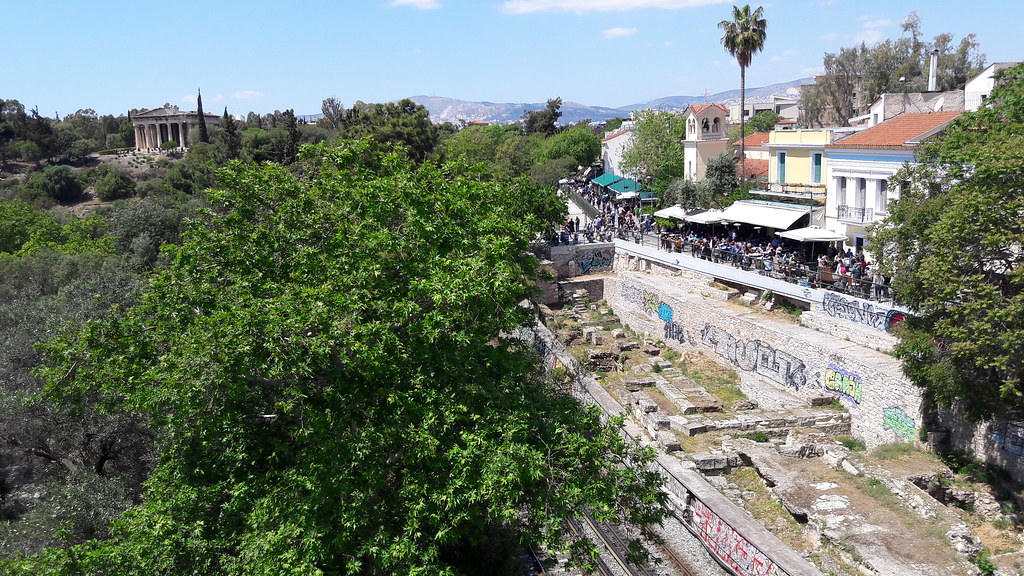
Agora constituted the political, social and commercial centre of the city.
Elections, theatre performances, sports events or political discussions are some of the activities taking place in the Ancient Agora. It has a rectangular shape and it was a residential area throughout the centuries. Today, it is an important historical site as it reflects the lifestyle of the citizens of Athens in antiquity.
Ancient Agora is located in the heart of Athens.
You may click here to view our creative activities connected to Ancient Agora.
Stoa of Attalos
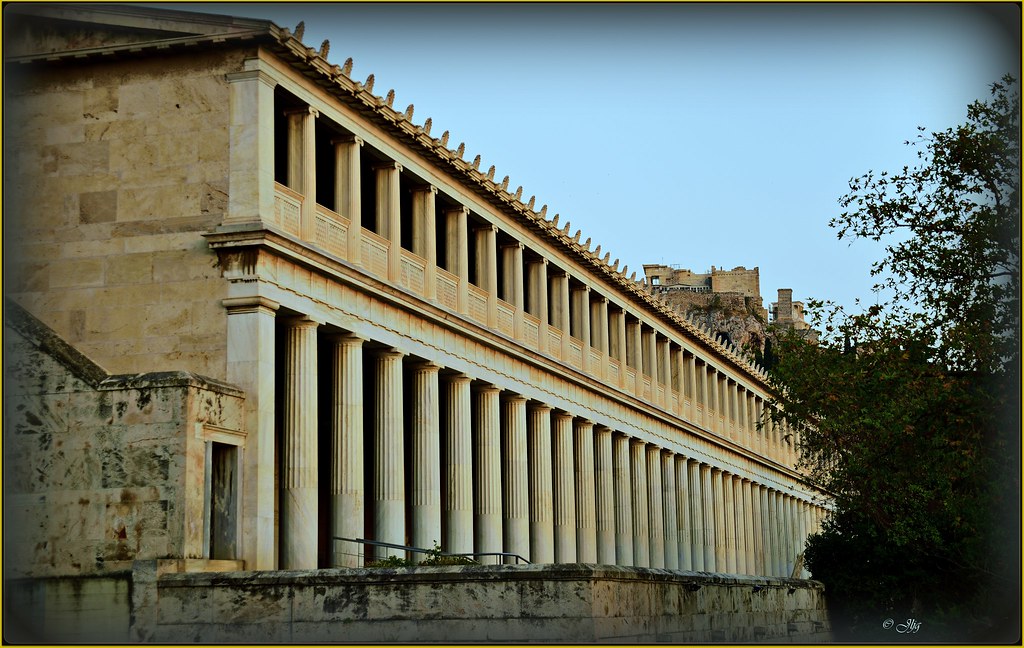
Stoa is the gift of the king of Pergamon, Attalos II to Athens.
It was a meeting point as well as a commercial centre for the citizens of ancient Athens. Today, it is a museum where you can admire the findings of the excavations in the Agora.
Stoa of Attalos is located at the Ancient Agora.
You may click here to view our creative activities connected to Stoa of Attalos.
Athens National Garden
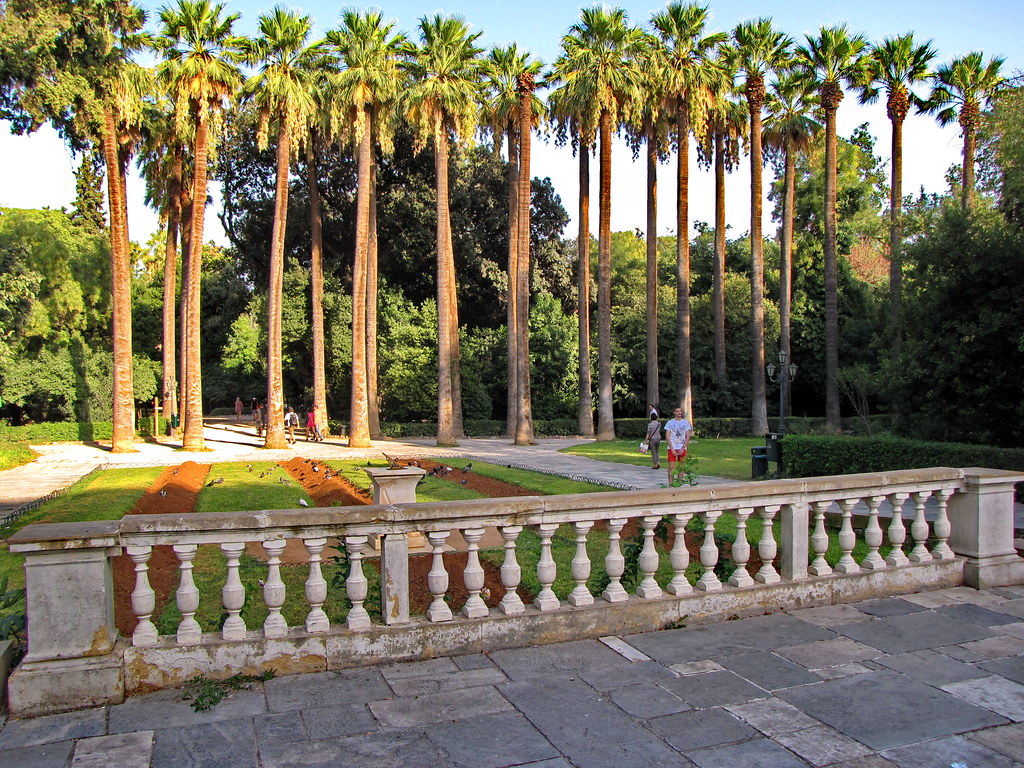
The National Garden is one of the most important and beautiful places in the heart of Athens. It is open to the public from sunrise to sunset.
The National Garden, the largest green oasis in the city centre, is suitable for cool walks among the avenues that are filled with people. It was created in 1839 and it was the garden of the palace of the first kings of Greece, which today houses the Parliament. There are seven entrances to the garden: one from Vasilissis Amalias street, one from Vasilissis Sofias Street, three from Irodou Attikou Street and two from the Zappeion Park area. In the garden there are duck ponds, a small zoo, a cafeteria, a children’s library and a playground. The garden is home to 7,000 trees, 40,000 bushes and other plants.
It is very close to Syntagma Square.
You may click here to view our creative activities connected to the National Garden.
Stavros Niarchos Foundation Cultural Center (SNFCC)
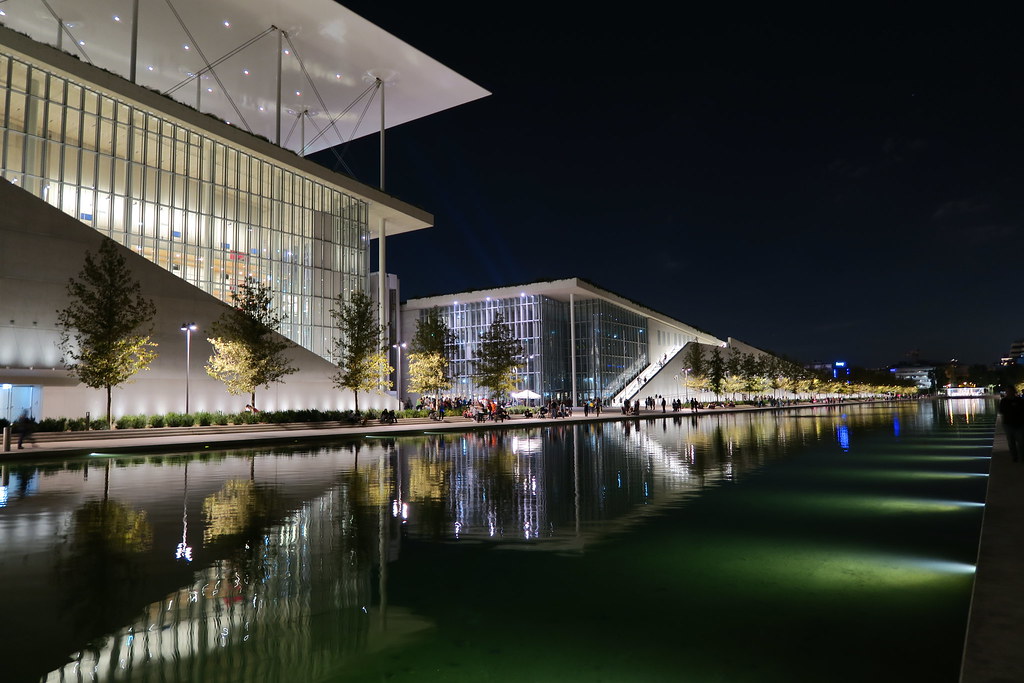
The SNFCC was inaugurated in 2017 and it includes the new homes of the National Library of Greece, the Greek National Opera and the Stavros Niarchos Park.
Concerts, live music events, theatrical workshops, wellbeing sessions and many other events held at the SNFCC are free to the public. The Foundation has also launched the monthly series of events entitled DIALOGUES aiming to strengthen public discourse by presenting individuals who inspire with their work. In addition, every year, the Foundation organises the SNF Nostos Festival and the SNF Conference which take place at the SNFCC.
SNFCC is near Old Faliron.
You may click here to view our creative activities connected to SNFCC.
Odeon of Herodes Atticus
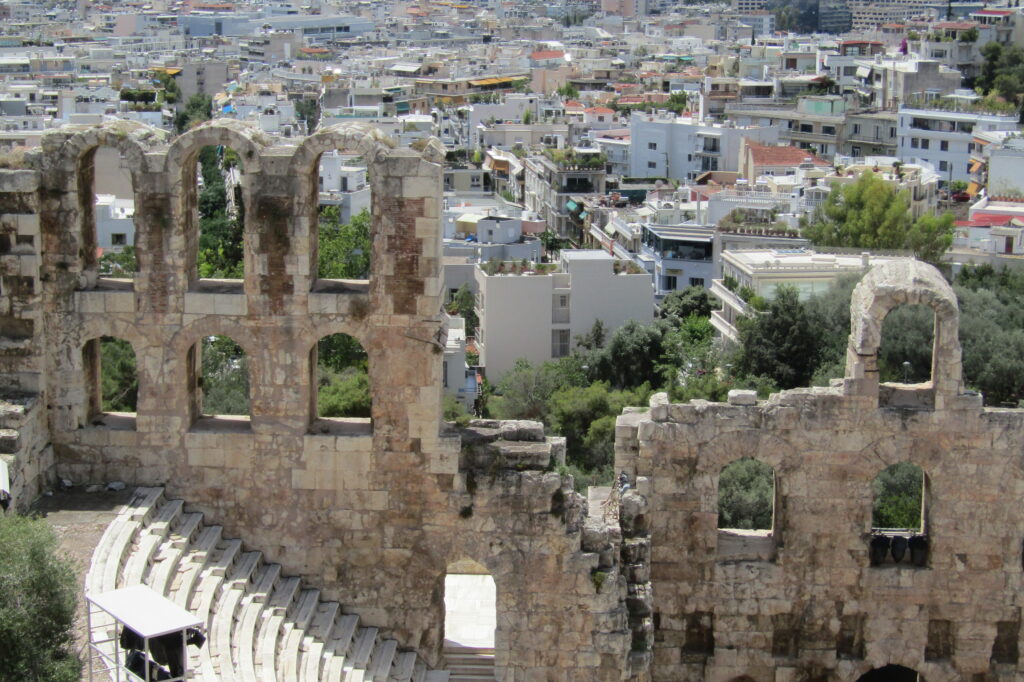
The Odeon of Herodes Atticus is a stone Roman theater, built in 161 AD by the Greek Herodes Atticus in memory of his wife.
The Odeon was used as a stage for music concerts with a capacity of 5,000 people. In 1950, it was restored and since then, it has been the main venue of the Athens Festival taking place from May to October every year. During this festival, a number of well known Greek and international artists perform in Athens, such as Maria Callas, Frank Sinatra, Elton John, Andrea Bocelli, Goran Bregovic, Florence and the Machine and many other famous artists and organizations.
It is located on the south slope of Acropolis in Athens.
You may click here to view our creative activities connected to the Odeon of Herodes Atticus.
Monument of Lysicrates
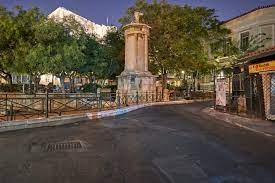
The monument of Lysicrates was created by Lysicrates in 335/334 BC. Lysicrates was a wealthy man who was sponsoring musical and theatrical performances in ancient Athens.
This monument was designed in order to commemorate the prize that Lysicrates won as the sponsor (choregos) of the winning theatrical performance during the relevant contest. The prize was placed on the top of the monument and so, it constitutes one of the most famous choragic monuments. Also, it influenced other similar monuments around the world, designed in a resembling way. For instance, in Australia, there is a version in the Royal Botanic Gardens, Sydney, in Edinburgh there is the Dugald Stewart Monument as well as many other choragic monuments found internationally.
The monument of Lysicrates is located near the Acropolis of Athens.
You may click here to view our creative activities connected to the monument of Lysicrates.
